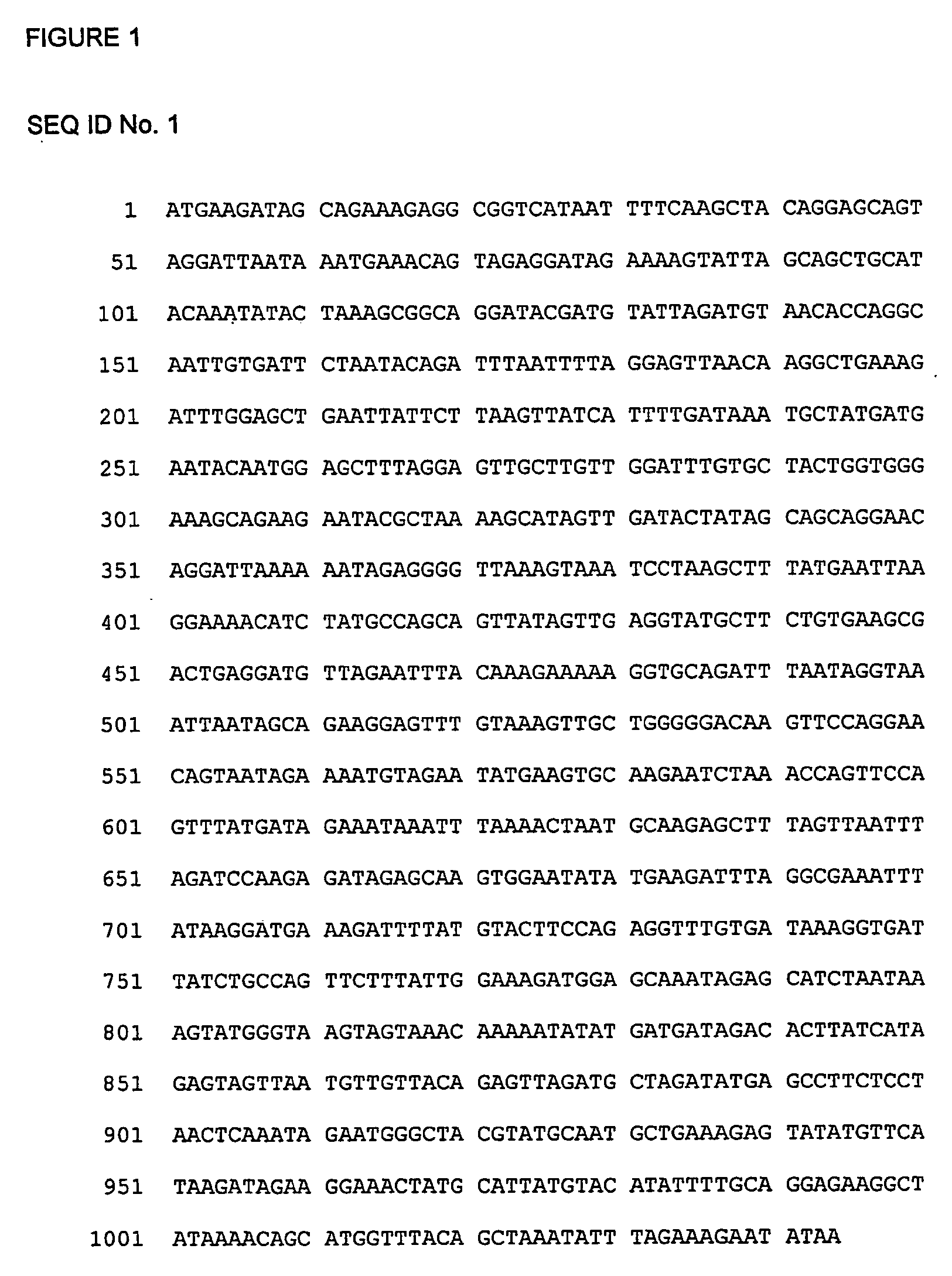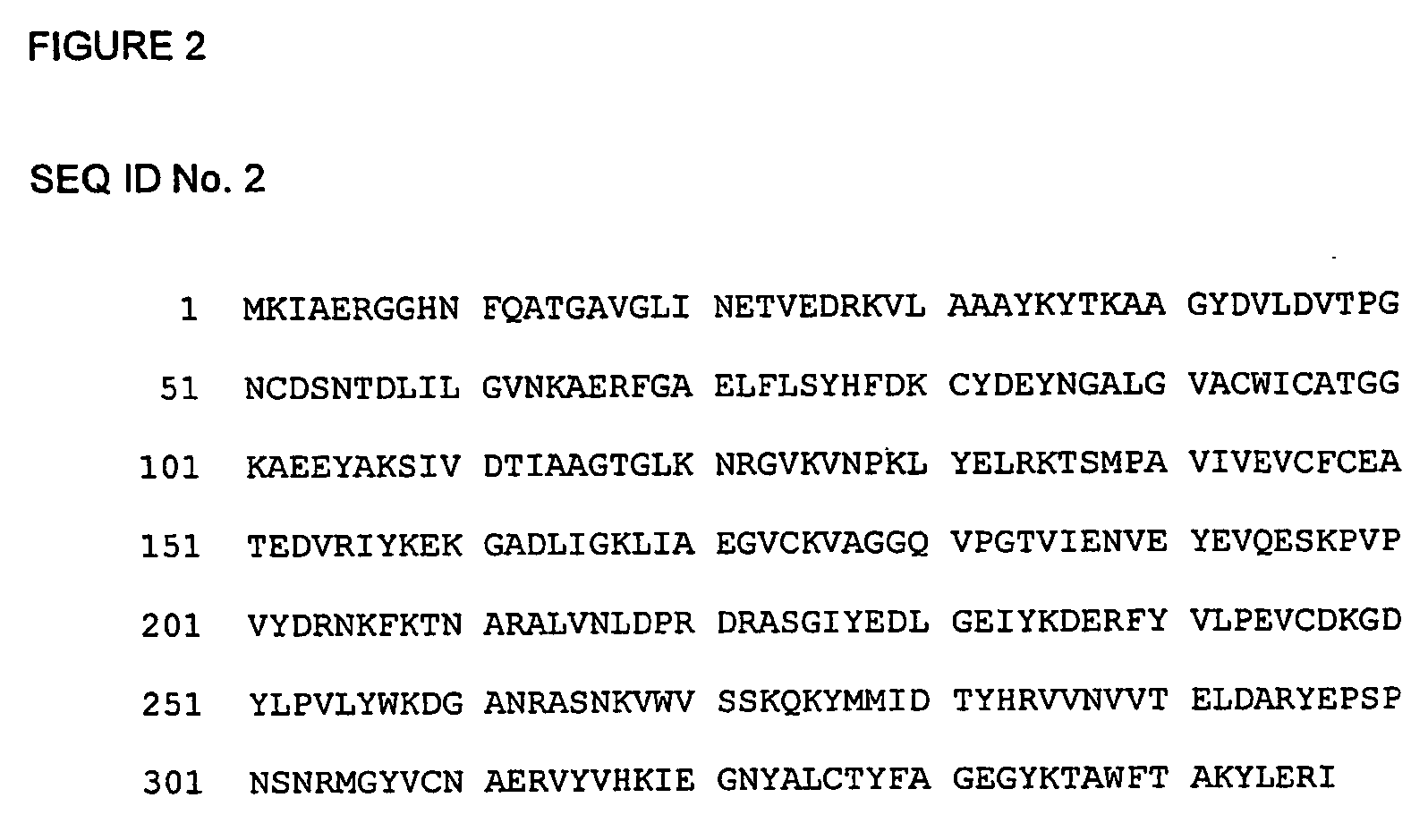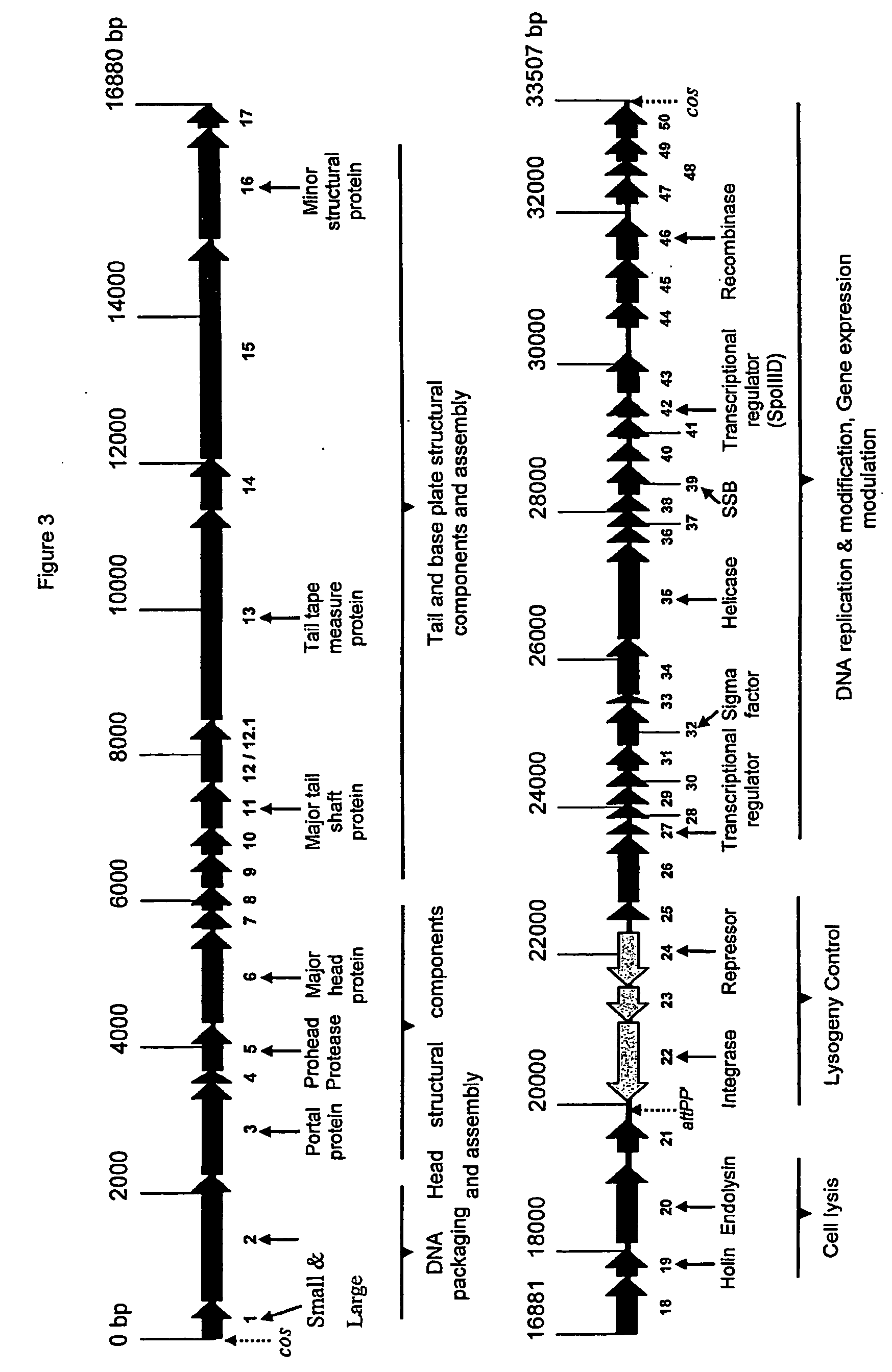Novel protein
a technology of lysin and bacteria, applied in the field of new bacterial virus (bacteriophage) lysin, can solve the problems of necrotic enteritis, food poisoning and growth retardation, and the specification does not show how to obtain such an isolated lysin nor the sequence, so as to reduce the growth potential, enhance the weight gain of said animals, and reduce the growth potential
- Summary
- Abstract
- Description
- Claims
- Application Information
AI Technical Summary
Benefits of technology
Problems solved by technology
Method used
Image
Examples
example 1
Isolation and Purification of Bacteriophages from C. perfringens
[0323] Method: Fifty-one clostridial strains isolated from various sources were screened for lysogeny by the UV-irradiation technique as described in Loessner et al (1990 Appl. Environ. Microbiol, 56, 1912-8). Exponentially growing clostridia (10 ml) were exposed to UV-light (254 nm, 0.0132 J cm−2) for 5 min. After a 3 h incubation (37° C.) in the dark the cultures were centrifuged (10 min 8000 g) and sterile filtered. Phage activity was tested by the spot on the lawn method against all C. perfringens strains.
[0324] The soft agar layer technique described in Adams (1959 Methods of study of bacterial viruses p 443-457 Bacteriophages, Intersciences Publishers Inc. NY) was used for the purification and propagation of the phages. Dilutions of the supernatants displaying lytic activity were added to 3.5 ml of molten soft agar inoculated with 0.1 ml of exponential growing culture of the appropriate propagation strain. The s...
example 2
Determination of the Lytic Range of the Bacteriophages
[0328] Method: The ability of the two phages to lyse C. perfringens strains was tested by the drop-on-the-lawn technique. Ten μl of phage stocks (107 pfu / ml) were placed on the plates inoculated with C. perfringens strains. The lytic activity was observed by formation of plaques in the lawns of the bacteria after overnight incubation.
[0329] Results: Phage φ3626 was lytic against 11 strains of the 51 C. perfringens strains (21.6%) while phage φ8533 was able to lyse 4 strains (7.8%).
Example 3
Sequencing and Analysis of Genomic DNA of Bacteriophage φ3626 from C. perfringens
[0330] Method: The genomic DNA of φ3626 was obtained using the standard method for the extraction of bacteriophage λ DNA (see Sambrook et al supra). The construction of genomic libraries of bacteriophage φ3626 was performed as detailed in Loessner et al (2000 Mol. Microbiol 35, 324-40). A time-limited digest of the DNA with Tsp509I (New England Biolabs) and fu...
example 3
Sequence Determination of Lysin Gene
[0335] Method: Comparison with other bacteriophages (φ105, Sfi21, φadh, φSLT, φPVL) revealed a similar organisation of the genome of φ3626. Typically, the endolysin was located upstream of the lysogeny control region whose ORFs are usually directed in the opposite direction (see FIG. 3). The product of ORF19 displayed similarities (50% over 105 amino acids) with the probable holin from Bacillus subtilis phage φ105 (Kobayashi, K et. al., unpublished, Accession number: AB016282). Using bioinformatic analysis implementing TmHMM, as described in Sonnhammer et al (1998 Proc. Int. Conf. Intell. Syst. Mol. Biol., 6: 175-182) it was established there was a high probability that the putative protein does have two transmembrane helix regions. Thus, it was tentatively assumed that ORF19 encoded a holin of φ3626.
[0336] In tailed bacteriophages, the endolysin gene can be located downstream of the gene encoding the holin (see Wang et al (2000 Ann. Rev. Microb...
PUM
| Property | Measurement | Unit |
|---|---|---|
| Tm | aaaaa | aaaaa |
| Tm | aaaaa | aaaaa |
| pH | aaaaa | aaaaa |
Abstract
Description
Claims
Application Information
 Login to View More
Login to View More - R&D
- Intellectual Property
- Life Sciences
- Materials
- Tech Scout
- Unparalleled Data Quality
- Higher Quality Content
- 60% Fewer Hallucinations
Browse by: Latest US Patents, China's latest patents, Technical Efficacy Thesaurus, Application Domain, Technology Topic, Popular Technical Reports.
© 2025 PatSnap. All rights reserved.Legal|Privacy policy|Modern Slavery Act Transparency Statement|Sitemap|About US| Contact US: help@patsnap.com



